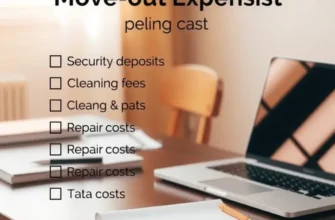Understanding how to effectively manage your lease termination can significantly ease the renting experience for young professionals, first-time renters, students, couples, and families. Knowing the ins and outs of lease agreements, especially when it comes to terminating a lease, can empower renters to make informed decisions that fit their financial circumstances. A lease termination notice is more than just a piece of paper; it’s a formal way to communicate your intention of ending your lease to your landlord or property management. This notice outlines your rights and obligations while providing crucial guidelines on what you can expect moving forward. As you navigate this process, clarity and confidence are key. This guide will help you understand how to write a lease termination notice, what it should include, and the necessary steps to take that will ensure a smooth transition.
Understanding the Lease Termination Process

Navigating the lease termination process can be daunting, especially for first-time renters. Understanding various aspects like reasons for termination, notice periods, and legal considerations is crucial.
One of the foremost reasons to terminate a lease is relocation due to job opportunities or personal circumstances. Some might decide to break their lease early because of financial constraints or conflicts with roommates or neighbors. Each reason might influence how you proceed with the termination process.
The notice period is a critical component. Generally, leases require a notice period of 30 to 60 days, but this varies depending on local laws and lease agreements. Failing to adhere to this period can attract penalties. Reading your lease agreement carefully at the beginning and when considering termination is important.
Legal considerations are another vital aspect. Certain jurisdictions require specific conditions to be fulfilled before a lease can be terminated. For instance, some local laws support early termination without penalty in cases of domestic violence or when certain repair requests are not adequately addressed by the landlord. Understanding these legal nuances helps protect your rights. It’s advisable to consult local tenant laws to ensure full compliance.
Communicating effectively with your landlord is key to a smooth termination process. Notify them in writing, detailing your intent to terminate the lease and the reasons if necessary. Clear communication can sometimes prevent disputes or confusion.
Financial implications should not be overlooked. Some leases include a fee for early termination, which could equal one or more months’ rent. It’s essential to budget for this and any potential overlap in housing costs. For more insights on managing your finances as a renter, consider checking out financial planning methods that can help manage these expenses effectively.
Lastly, ensure the rental property is left in good condition. Conduct a walkthrough with your landlord to address any potential issues that might arise related to the security deposit. Documenting the state of the apartment before leaving can prevent disagreements.
Understanding these various elements of lease termination can help first-time renters navigate the process more seamlessly. Ensuring clarity, legal compliance, and proactive communication not only helps fulfill obligations but can also preserve a positive rental history.
Crafting Your Lease Termination Notice

Writing a lease termination notice may seem daunting, but it becomes straightforward with a methodical approach. Begin with the basics: date your notice to establish exactly when you are informing your landlord. This is crucial for adhering to your lease’s required notice period, usually 30 or 60 days.
Next, address your notice appropriately. Use the same names listed on your lease agreement for consistency. State clearly at the start of the notice that you intend to terminate your lease. Specify the termination date, aligning with your lease’s stipulated timeframes and obligations.
Be sure to mention the property address. This identifies the specific unit and ties it back to your lease contract. It’s helpful to include your new forwarding address. This ensures any future correspondence or final bills reach you without hassle.
For formatting tips, maintain professionalism with a formal tone. Use a standard font and letter format, and verify it’s easy to read. Include a subject line like “Lease Termination Notice” to immediately convey the document’s purpose.
Digital or written, ensure your signature is present. An unsigned notice might not meet necessary legal standards.
Avoid common pitfalls. First, do not assume verbal communication of your intention to vacate is sufficient. Official notice must align with the requirements set out in your lease. Secondly, avoid mailing your notice without tracking. Use certified mail or a similar method at the very least.
Essentially, detail carefully, communicate clearly, and ensure a timely delivery. With these steps, you will move seamlessly to your next chapter, perhaps considering additional financial planning for renters to ensure stability in your new arrangements.
Final words
Navigating the lease termination process can feel overwhelming, but understanding the critical steps can help manage your transition smoothly. Remember to provide your landlord with ample notice, adhere to the terms of your lease, and create a polite, clear lease termination notice. By following the guidelines outlined in this guide, you can minimize stress and clarify your next steps. Whether you’re moving due to a new opportunity, a growing family, or any other reason, taking these steps can help pave the way for a fresh start in your new living situation.









